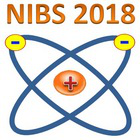Speaker
Dr
Dirk Wünderlich
(Max-Planck-Institut für Plasmaphysik)
Description
The ion source of the ELISE test facility ($0.9×1.0 \,\mathrm{m}^2$ with an extraction area of $0.1 \,\mathrm{m}^2$) has half the size of the ion source foreseen for the ITER NBI beam lines. Main aim of ELISE is to demonstrate that such large RF driven negative ion sources can achieve the following parameters at a filling pressure of $0.3 \,\mathrm{Pa}$: extracted current densities of $28.5 \, \mathrm{mA}/\mathrm{cm}^2$ in deuterium for a pulse length of $3600 \,\mathrm{s}$ and $33.0 \, \mathrm{mA}/\mathrm{cm}^2$ in hydrogen for $1000 \, \mathrm{s}$, a ratio of co-extracted electrons to extracted ions below one and deviations in the uniformity of the extracted beam of less than $10 \, \%$.
This presentation describes results of the recent ELISE experimental campaigns in hydrogen and deuterium. Focus is laid on long pulse operation (up to the pulse length required for ITER) with high RF power (possible are up to 75 kW/driver). The performance obtained during such pulses is restricted mainly by a strong temporal increase of the co-extracted electrons. Additionally, the co-extracted electron current can show a pronounced top-bottom asymmetry. For SPIDER and MITICA as well as for the ITER NBI system the latter can pose a risk to the extraction grid (EG), acting as a dump for these electrons: even when the measured global amount of co-extracted electrons is below the limit, a strong asymmetry can result in local overheating of the EG.
Several measures for reducing, stabilizing and symmetrizing the co-extracted electron current while not reducing significantly the extracted negative ion current have been investigated systematically. Examples are modifying the electrostatic potentials close to the extraction system by means of elements additionally introduced into the source and modifying the temperatures of different ion source components.
Presented and discussed are extracted negative ions and co-extracted electron current densities obtained during these investigations as well as results of plasma and beam diagnostics (indicating the plasma parameters and their homogeneity and the beam homogeneity, respectively).
Primary author
Dr
Dirk Wünderlich
(Max-Planck-Institut für Plasmaphysik)
Co-authors
Bernd Heinemann
(Max-Planck-Institut für Plasmaphysik)
Dr
Federica Bonomo
(Max-Planck-Institut für Plasmaphysik)
Isabella Mario
(Max-Planck-Institut für Plasmaphysik)
Markus Fröschle
(Max-Planck-Institut für Plasmaphysik)
Rudi Riedl
(Max-Planck-Institut für Plasmaphysik)
Prof.
Ursel Fantz
(Max-Planck-Institut für Plasmaphysik)
Dr
Werner Kraus
(Max-Planck-Institut für Plasmaphysik)

